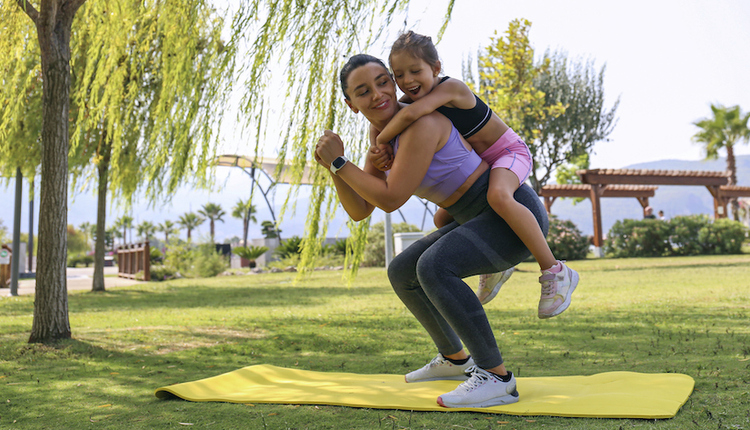[Read Part 2 - Avoiding negative images]
Like tennis bad-boy Andre Agassi was famous for saying, "Image is everything.€VbCrLf While that sounds a little arrogant and pretentious, you've got to admit, there's a lot of truth to that statement. Creating and maintaining your success image is one of the most important things you can do as a professional. In fact, it may just be the most critical aspect of your success. Just think about how you purchase any product or service, and you'll realize the image of the product and how you'll feel owning it are the major considerations. Surprisingly, in most cases they're the only consideration.
In no other professional service or consulting field is this more true than in personal training. When it boils down to it, what people are buying and paying for is you. They're paying for the experience of being around and interacting with you. In this situation, the image you convey will pretty much dictate how much business you get, your retention rates and what you can charge.
But there's good news: How we're viewed by others is something completely under our control. Realizing this is one of the most liberating feelings you can have because you're free to create the image you want.
The goal is to adopt an image that positively conveys expertise and personality in an immediately recognizable way to our potential customers. In today's marketplace, people want to deal with an expert - time is too short, and money is too valuable to spend any of it dealing with an amateur. In addition to expertise, you also need to project a warmth and accessibility. An image should be clean, crisp and capable of being understood in an instant. It lets the prospect know that you are not only capable of solving his problem but that you are also a person they want to be with - an individual the client prospect wishes to spend sustained amounts of time with.
Let's take a look at some sample success images:
The Expert Trainer
I recommend this success image to any trainer that temporarily needs a boost to their perceived credibility. This image can be characterized by khaki pants instead of sweat pants and an embroidered, short-sleeved polo shirt, for example. The shirt should have the name of your training business on the front and the words "Personal Trainer€VbCrLf embroidered on the back. You should wear this shirt to each and every training session, even when you train clients in their homes.
This image would be especially valuable to younger trainers; for example, a 22-year-old will come across much more polished and professional if they are in the relaxed uniform of the Expert Trainer success image. If you're dealing with a population that puts an emphasis on technical skill, for example, the pre-natal population, senior citizens or post-rehab clients, then this would also be a perfect look to establish mega-credibility. These can be very lucrative client groups, especially if you adopt the right image.
Also, if you're just getting started as a trainer and aren't yet in as great shape as you'd like to be or don't have much experience, you can adopt the Expert Trainer image to emphasize your technical skill (which you should be working to grow rapidly) rather than, say, your personal experience.
The Guru
This is the image that can be adopted by a trainer with lots of experience or credentials in fitness. Rather than taking away from their credibility, it adds some flavor to it.
A perfect example would be famous body-building trainer Charles Glass. Charles has his own unique style and eccentric personality which is unique to him and separates him from any other trainer on the market. However, he's unique only to a point; you'll still always see him wearing the same colors and the same types of clothes in all of his interviews and media appearances. And you'll always see his assistant trainer wearing a Charles Glass Training shirt with his slogan on it. It's obvious Charles pays careful attention to cementing his role as an authority in his clients' and the public's mind.
Boxing coach and personal trainer Dave "Scooter€VbCrLf Honig is another example. But he's an older trainer with credentials and a client list that's very impressive. He can get away with this at his level, but acting like him wouldn't be advisable to most.
The Guru image isn't for everyone; it's suitable only if you have tons of experience and/or credentials. For example, if you're a champion athlete in your area or are famous for some other reason (not just a genius in your own mind). In most cases, the guru image is just something that comes about naturally rather than one you consciously adopt, and even in that case, it's still tempered with professionalism.
Master Trainer
The success image of the Master Trainer is ideal for any experienced trainer and is the one you'll see most often adopted by trainers on television and in the media. The clothing of this image is usually characterized by an athletic outfit - it could be a tasteful matching track suit or fitness shirt and pant combination. What separates this outfit from typical gym clothes is that it's something more new and expensive than something you would normally work out in or wear to the gym. While it's still a wardrobe appropriate for fitness, you have the feeling that this person has come to the gym for a professional reason, not for a workout. This is the type of image of celebrity trainers like Gunnar Peterson and David Kirsh, but it can be easily taken on by anyone. In fact, you almost don't have a choice; potential customers look to TV for their cues on what a high-level trainer should look like.
What defines the Master Trainer image? You'll probably need to go to the biggest and best sporting goods store in your area for a matching outfit. Top this image off with a good physique and excellent grooming, and you'll be your best advertisement and well on your way to being booked solid at the highest rates possible.
Player/Coach
This image gives you more leeway in your choice of outfit. For example, you can wear shorts, an arm band or sports (not baseball) cap. The difference is that it should match well.
This image is effective if you're conducting outdoor sessions, where your training will be hands-on and probably require you to get involved and sweat. Don't confuse this with a trainee outfit (one of the negative images mentioned in part 2 of this article). Again, the clothes must match, be clean and set you apart from someone merely working out themselves - no "wife-beaters€VbCrLf or old, gray sweat pants!
Kaiser Serajuddin is the owner and head trainer of GoHard Fitness Inc. in New York City (www.gohardfitness.com). He holds a degree in biology from Long Island University and is certified by the AFAA, IFPA and Spinning. He writes and maintains Super-Trainer.com, a blog delivering insightful news, training tactics and profiles of other top trainers. Contact him atkaiser@gohardfitness.com.
[Read Part 2 - Avoiding negative images]










